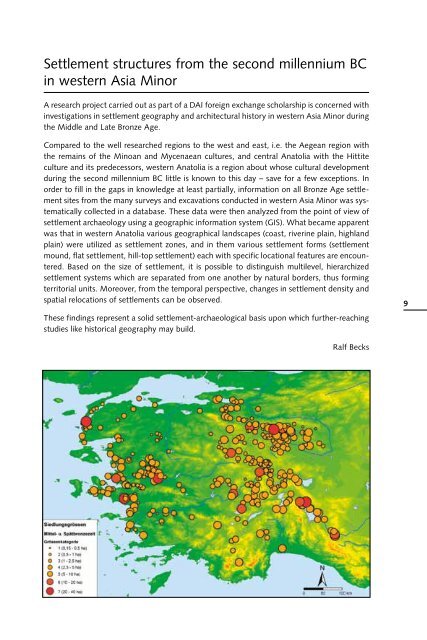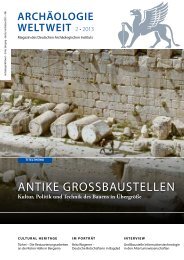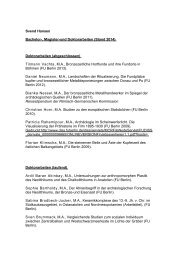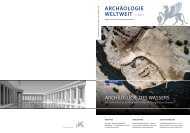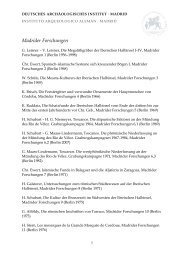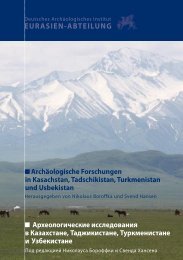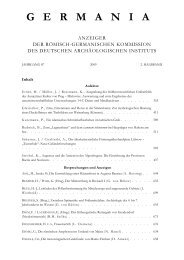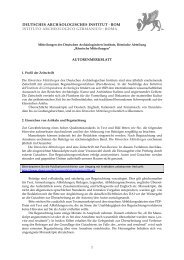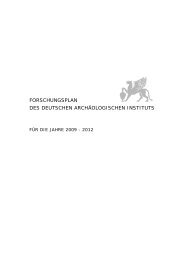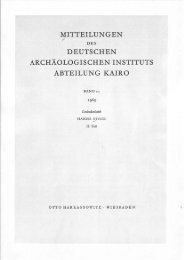Untitled - Deutsches Archäologisches Institut
Untitled - Deutsches Archäologisches Institut
Untitled - Deutsches Archäologisches Institut
You also want an ePaper? Increase the reach of your titles
YUMPU automatically turns print PDFs into web optimized ePapers that Google loves.
Settlement structures from the second millennium BC<br />
in western Asia Minor<br />
A research project carried out as part of a DAI foreign exchange scholarship is concerned with<br />
investigations in settlement geography and architectural history in western Asia Minor during<br />
the Middle and Late Bronze Age.<br />
Compared to the well researched regions to the west and east, i.e. the Aegean region with<br />
the remains of the Minoan and Mycenaean cultures, and central Anatolia with the Hittite<br />
culture and its predecessors, western Anatolia is a region about whose cultural development<br />
during the second millennium BC little is known to this day – save for a few exceptions. In<br />
order to fill in the gaps in knowledge at least partially, information on all Bronze Age settlement<br />
sites from the many surveys and excavations conducted in western Asia Minor was systematically<br />
collected in a database. These data were then analyzed from the point of view of<br />
settlement archaeology using a geographic information system (GIS). What became apparent<br />
was that in western Anatolia various geographical landscapes (coast, riverine plain, highland<br />
plain) were utilized as settlement zones, and in them various settlement forms (settlement<br />
mound, flat settlement, hill-top settlement) each with specific locational features are encountered.<br />
Based on the size of settlement, it is possible to distinguish multilevel, hierarchized<br />
settlement systems which are separated from one another by natural borders, thus forming<br />
territorial units. Moreover, from the temporal perspective, changes in settlement density and<br />
spatial relocations of settlements can be observed.<br />
These findings represent a solid settlement-archaeological basis upon which further-reaching<br />
studies like historical geography may build.<br />
Ralf Becks<br />
9


